Monday 21 July 2014
As many of my readers know my other interest in life other than energy matters is space – and specifically human exploration of space. I believe that exploration is hard wired into humans – otherwise we would still be living in the trees – and space exploration (and ultimately development) is the next logical step in our drive to explore. Of course we should also continue exploring Earth, especially the oceans – the loss of MH370 reminded us how little we know about the oceans – but we need to step up our presence in space.
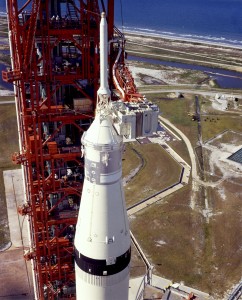
Forty five years ago the Apollo 11 mission landed the first men on the moon. Neil Armstrong and Buzz Aldrin touched down on the Sea of Tranquility on 20th July 1969, carried out the first moon walk and then returned to their colleague Michael Collins orbiting the moon in the Command Module. They safely splashed down in the Pacific ocean on 24 July – thus fulfilling John F. Kennedy’s vision outlined in a speech to Congress on 25 May 1961: “this nation should commit itself to achieving the goal, before this decade is out, of landing a man on the moon and returning him safely to the earth”.
I know that space exploration, and particularly now the emerging space tourism industry (which I believe will become a high-growth industry of the 2020s) can be controversial – especially amongst environmentalists but putting all that on one side, the 45th anniversary of Apollo 11 is a good time to remember just what an amazing achievement Apollo 11, and indeed the whole Apollo programme really was. It is also an excuse to remember some of the amazing facts about the Apollo technology – what NASA used to call “gee whiz data” because in the now archaic language of the 1960s it made you say “gee whiz”. I guess the modern equivalent would be “awesome” (although I am undoubtedly demonstrating that I am several generations of language behind in saying that).
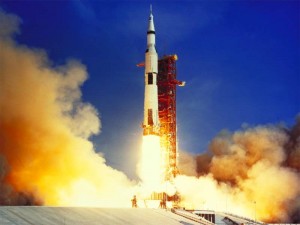
The legacy of Apollo falls into several areas including technology, management and environmental consciousness.
Although the technology was (and still is) amazing the other incredible thing about Apollo was the management of such a complex, huge, high technology project. The programme employed 411,000 people at its peak (in 1965) and involved various government agencies as well as NASA, universities and the private sector. The management systems – mainly paper based in those days of course – worked well enough to bring all the people, resources, systems, components and money together and achieve the objective. In 1961 when President Kennedy set the objective (as clear and measurable an objective as there could be), many observers including many in the aerospace industry, considered that it was impossible. Even the methodology for going to the moon (Earth Orbit Rendezvous versus Lunar Orbit Rendezvous) was the subject of much debate and not finally settled until the middle of 1962. The Apollo programme truly demonstrates that humans can achieve anything we want to – if we have a clear objective and put the resources into it.
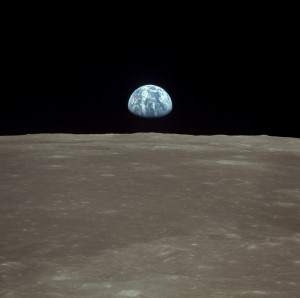
Another legacy from Apollo is its effect on the global environmental consciousness. There is little doubt that the photographs of Earth taken from the moon and enroute to the moon – particularly from Apollo 8 orbiting the moon in December 1968, gave us a new perspective on the Earth as a small, fragile “blue marble”.
American poet Archibald MacLeish wrote at the time: “To see the Earth as it truly is, small and blue and beautiful in that eternal silence where it floats, is to see ourselves as riders on the Earth together, brothers on that bright loveliness in the eternal cold, brothers who know now that they are truly brothers.”
Many astronauts and cosmonauts since then have commented on the significant impact of seeing Earth from space, albeit “only” from Earth orbit as we have not revisited the moon since 1972. Sigmund Jaehn, the first German astronaut said:
“Before I flew, I was already aware of how small and vulnerable our planet is; but only when I saw it from space, in all its ineffable beauty and fragility, did I realize that humankind’s most urgent task is to cherish and preserve it for future generations.”
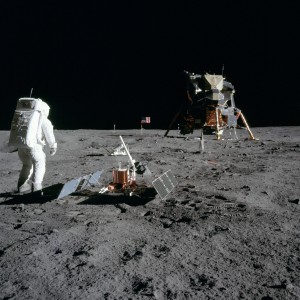
Anousheh Ansari, the first female private space explorer, fourth private space participant and first astronaut of Iranian descent who flew to the International Space Station in 2006 said:
“Nothing could have prepared me for the beauty of the view. It was breathtaking – watching the Earth from above without seeing borders, wars and divisions and realising how fragile the planet is. Every world leader should make the trip. They’d start to see things differently.”
The even greater impact of seeing Earth in its entirety from the distance of the moon – and being able to cover the entire Earth with your thumb – can only be imagined.
Although people talk about the technological “spin off” of Apollo and often incorrectly cite examples such as Teflon (actually discovered in 1938). Velcro (invented 1948) and the “space pen” (developed privately and not for NASA). There have been many real spin-offs from Apollo (and the Shuttle) but probably the greatest spin-off from the cold war space programme that culminated in Apollo was the huge increase in science and engineering education and expenditure that started after the first satellite Sputnik 1 shocked America. The generation of scientists and engineers that delivered Apollo, and the generation after that which was inspired by Apollo, built the foundations for the incredible technologies we use today.
Whatever your views on space exploration it is worth taking a minute or two to remember the enormity of the achievement of Apollo and the acknowledge the incredible, almost super-human, efforts of the more than 400,000 people that worked on the programme and the 29 astronauts who flew in Apollo – 24 of whom went to the moon and 12 of whom walked on the moon.
To finish up by returning to the theme of exploration, my favourite Apollo quote of all is not the well known “that’s one small step….” from Neil Armstrong but rather a quote from Apollo 15 Commander, David R. Scott, while surveying the landing site soon after touch-down on what was the most spectacular Apollo landing site at Hadley-Apennine:
“Man must explore and this is exploration at its greatest”
Some gee whiz facts about Apollo.
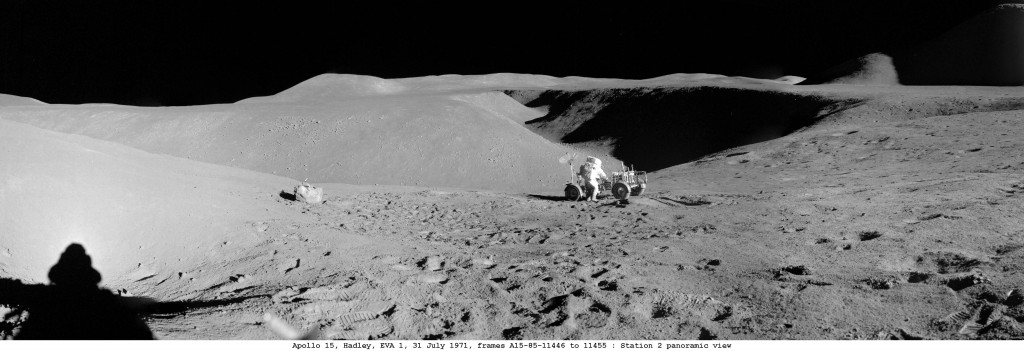
You often see a quote to the effect that a digital watch has more computing power than a Saturn V or some equivalent. The Lunar Module Computer and the Apollo Guidance Computer (identical machines – one in the Lunar Module and one in the Command Module) each weighed about 70 lbs, measured about 29” x 12” x 6” and had a power usage of 70 watts. The read-only memories were made of woven wire ropes with an equivalent of 72kb memory. For a brief over-view of the Apollo computer rope memories see: https://www.youtube.com/watch?v=P12r8DKHsak.
The heat leak from the Apollo cryogenic tanks, which contain hydrogen and oxygen, was so small that if one hydrogen tank containing ice were placed in a room heated to 70 degrees F, more than 8 years would be required to melt the ice to water at just one degree above freezing. It would take approximately 4 years more for the water to reach room temperature.
When the Apollo spacecraft re-entered the atmosphere it generated energy equivalent to approximately 86,000 kWh of electricity – quoted at the time as “enough to light the city of Los Angeles for about 104 seconds; or the energy generated would lift all the people in the USA 10-3/4” off the ground”.
The Saturn V rocket itself was amazing. This was a vehicle weighing 2,700 tonnes – equivalent to a navy destroyer and 18 metres (60 feet) taller than the Statue of Liberty. The five F-1 engines of the first stage of the Saturn V produced 160,000,000 horsepower, “about double the amount of potential hydroelectric power that would be available at any given moment if all the moving waters of North America were channeled through turbines”.
The 12-foot-high Apollo Command Module contained about fifteen miles of wire.
For the best summary of the whole Apollo programme read Andrew Chaikin’s “A Man on the Moon”.
Normal energy related service will be resumed soon.
Comments
Comments are closed.
Dr Steven Fawkes
Welcome to my blog on energy efficiency and energy efficiency financing. The first question people ask is why my blog is called 'only eleven percent' - the answer is here. I look forward to engaging with you!
Email notifications
Receive an email every time something new is posted on the blog
Tag cloud
Black & Veatch Building technologies Caludie Haignere China Climate co-benefits David Cameron E.On EDF EDF Pulse awards Emissions Energy Energy Bill Energy Efficiency Energy Efficiency Mission energy security Environment Europe FERC Finance Fusion Government Henri Proglio innovation Innovation Gateway investment in energy Investor Confidence Project Investors Jevons paradox M&V Management net zero new technology NorthWestern Energy Stakeholders Nuclear Prime Minister RBS renewables Research survey Technology uk energy policy US USA Wind farmsMy latest entries


